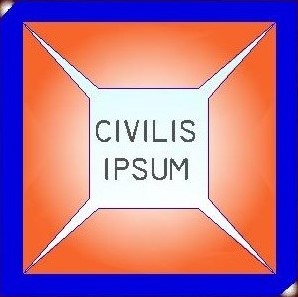There are varieties of painting materials and decorative finish available in the market. Each type of paint and decorative finish has its covering capacity in m2. This covering capacity varies between surfaces to be treated. Table 1 below shows the covering capacity of various paints per 100 m2 of wall in litres (1 litre = 0.264 gallons). The choice of the type of type of paint for buildings or other works depends on many factors some of which can be found HERE.
Table 1; Paint covering capacity
| Covering capacity per 100 m2 (1 coat only) | Volume (litres) |
| Alkaline resisting primer to lime plaster | 9 |
| Alkaline resisting primer to brick/block work | 13 |
| Wood primer | 9 |
| Metal primer | 6.25 |
| Undercoat | 7 |
| Gloss paint | 8 |
| Eggshell paint | 7 |
| Emulsion paint | 7 |
| Bituminuous paint | 10 |
| Sandtex-Matt | 21 |
| Staining | 7 |
| Synthetic Varnish | 5.5 |
| Aluminum | 6 |
| Knotting (Extreme case) Minimum (Average) | 0.57 0.30 |
| Putty for stopping | 1.5 – 2.5 kg |
| Sand-paper for preparing | 8 sheets |
| Snowcam | 40 kg |
| Sandtex-textured | 95 kg |
Estimation of paint requirement for a small building
To get the paint requirement for a building requires first to find the area of the spaces to be painted. Figure 1 below shows a small building in which it is required to find the paint requirement for the internal spaces of the building.

The internal spaces of the building comprise:
- The parlour
- The bedroom
- Toilet, and
- Kitchen
If the headroom of the building 3 m across all spaces;
The parlour
The area of parlour = 15.3 m (perimeter) x 3 m (height or headroom) = 45.9 m2 – (window spaces + door spaces)
Window spaces = 1 m (length) x 1.2 m (height) x 2 (number) = 2.4 m2
Door spaces = 0.9 m x 2.1 m x 2 = 3.78 m2
Net area to be painted = 45.9 – 2.4 – 3.78 = 39.72 m2
The bedroom
The area of bedroom = 12.9 x 3 = 38.7 m2
Window spaces = 1 x 1.2 = 1.2 m2
Door spaces = (0.9 x 2.1 x 2) + (0.75 x 2.1 x 2) = 3.78 + 3.15 = 6.93 m2
Net area to be painted = 38.7 – 1.2 – 6.93 = 30.57 m2
Toilet
The area of toilet = 6 x 3 = 18 m2
Window spaces = 0.6 x 0.6 = 0.36 m2
Door spaces = 0.75 x 2.1 = 1.575 m2
Net area to be painted = 18 – 0.36 – 1.575 = 16.065 m2
Kitchen
The area of kitchen = 6.6 x 3 = 19.8 m2
Window spaces = 0.6 x 0.9 = 0.54 m2
Door spaces = 0.75 x 2.1 = 1.575 m2
Net area to be painted = 19.8 – 0.54 – 1.575 = 17.685 m2
Total net area to be painted = area of parlour + area of bedroom + area of toilet + area of kitchen
= 39.72 + 30.57 + 16.065 + 17.685 = 104.04 m2
Assuming an emulsion paint of 7 litres/100 m2 would be used for the surfaces and be applied in three coats, the coverage capacity would reduce with subsequent coats as follows:
1st coat = 7 litres/100 m2
2nd coat = 6.65 litres/100 m2
3rd coat = 6.30 litres/100 m2
It implies that the three coats would require a total of 7 + 6.65 + 6.3 = 19.95 litres/100 m2
104.04 m2 of wall would require (104.4 x 19.95) / 100 = 20.8 litres ≈ 21 litres
It implies that 21 litres (0.021 m3) or 5.5 gallons of EMULSION PAINT would be required to paint the internal spaces of the building.
Thanks for reading!

